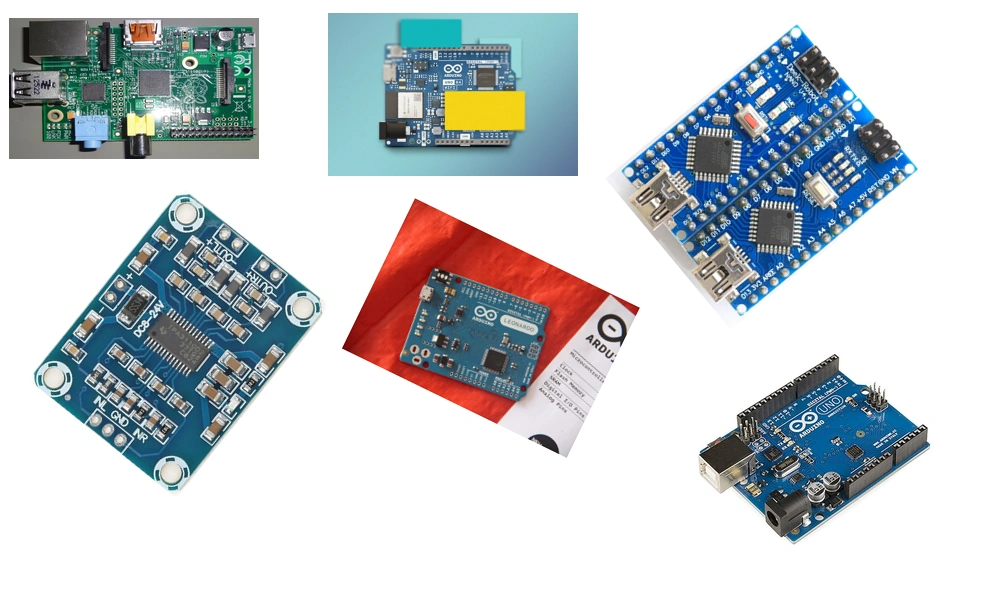
Table of Contents
Intro
In the table on this page, you will find Microcontroller Boards Comparison of the specs and features of common microcontroller boards that are commonly used by the hobbyist and the maker, which are currently for available. The list will only include boards that you can actually purchase via retail outlets, or from the manufacturer, so no Kickstarter projects, nor other crowdfunded boards regardless of whether they have reached their funding goal. Also, nothing that is merely a press release no matter how reputable the company issuing the release happens to be.
This will be a comparison of boards that anyone can decide to go out and buy price notwithstanding. Ideally, I will be able to partner with the guys over at CNX-Software.com because they have hands on experience with most everything we will be covering here, plus I personally enjoy reading a lot their content.
When each board is added to the table there will be an accompanying blog post devoted to the board. You can find it by clicking through the link in the first column where the boards name is. Or you can find all of the writeups from the Microcontroller boards comparison table here in list format. There you will find much more information than could fit in a table as well as info on programming, projects the board is used in, and much more.
If this is successful, I have ideas for a small series of follow-ups, one for sensor modules and addon hats for the microcontrollers featured in this table, another dedicated to the different Single Board Computers currently available, and maybe a final one that will cover either displays, or networking addons.
Microcontroller board comparison
Microcontroller board comparison
| Name | Company | OS? | Processor | Frequency | Size | Interface | Voltage | Flash | EEPROM | SRAM | DIO | PWM | AIO | Release Date | |
|---|---|---|---|---|---|---|---|---|---|---|---|---|---|---|---|
| The Arduino Uno | Arduino | Y | ATmega328P | 16 MHz | 2.7″x2.1″ | USB | 5V | 32 | 1 | 2 | 14 | 6 | 6 | 9/24/2010 | |
| Arduino Leonardo | Arduino | Y | ATmega32U4 | 16 MHz | 2.7″×2.1″ | USB | 5V | 32 | 1 | 2.5 | 20 | 7 | 12 | 7/23/2012 | |
| Arduino Mega 2560 | Arduino | Y | ATmega2560 | 16 MHz | 4″×2.1″ | USB | 5V | 256 | 4 | 8 | 54 | 15 | 16 | 9/24/2010 | |
| Arduino Pro Micro | Sparkfun | Y | ATmega32U4 | 16 MHz | 0.7″×1.9″ | USB | 5V | 32 | 1 | 2.5 | 18 | 7 | 12 | 11/8/2012 | |
| The LILYGO T-Track | LILYGO | Y | ESP32-S3R8 Dual-core LX7 | 240 MHz | 2.24″x.79″ (touchscreen 1″x.43″) | USB-C | 5V | 16MB | 1 | 512KB (8MB PSRAM) | 18 | 7 | 10 | ||
| The Raspberry Pi Pico | Raspberry Pi Foundation | Y | RP2040 | 133 MHz | .83″x2″ | Micro-USB | 5V | 2 | – | 264kB | 23 | 16 | 3 | 1/21/2021 | |
| The Arduino Nano | Arduino | Y | ATmega328P | 16 MHz | 1.77″x0.71″ | Mini USB | 5V | 32 | 1 | 2 | 14 | 6 | 6 | 5/15/2008 | |
| NodeMCU ESP32 | Espressif Systems | Y | ESP32 | 240 MHz | 1.89″x1.02″ | USB-C | 3.3V | 4 | – | 512kB | 34 (+5 in only) | 34 | 18 | 9/6/2016 | |